Simgot’s latest flagship IEMs showcase what the brand is capable of – one of the most technically proficient options in their price range.
- Phenomenal build quality, excellent accessories
- Energetic tuning without being too harsh or fatiguing
- Physical, dense bass response
- Class-leading resolution among single-dynamic IEMs
- Tuning nozzles offer many DIY possibilities
- Very good macro and micro dynamics
- Energetic tuning can get tiresome
- Glossy shells are fingerprint magnets
- Lower-mids can come across as thin at times
- No balanced cable option during the purchase
Simgot has had a rapid rise this year. From the budget-oriented EW100 to the critical and commercial success of EA500 – it’s been quite an eventful 2023 for the brand.
While the budget offerings have been fairly well received, there remained a gap in the higher end of the market. The Simgot EA1000 aim to bridge that gap and showcase what Simgot is truly capable of.
It’s a tall task, as the higher the price ladder you go, the tougher it is to stand out. Simgot’s hopes of success rely on a novel passive radiator and the incorporation of one of the most unique dynamic drivers available.
Will that be enough, or is it a bridge too far? Read on.
Unboxing and First Impression
Design and Build
The Simgot EA1000 have a stunning design.
The gorilla glass-backed faceplate, the beveled edges, and the mirror-polished stainless steel shell beautifully mesh together, forming one of the most visually striking IEMs I’ve encountered.
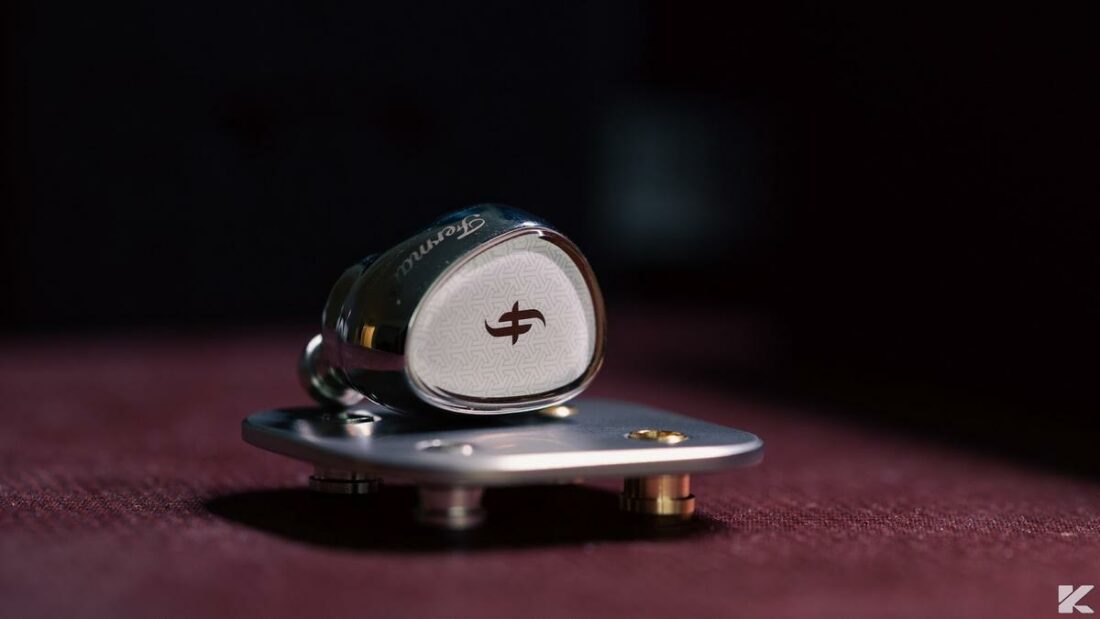
The inner side is even more interesting, given the passive radiator “vent” underneath the channel marking. Moreover, there are two additional vents to relieve pressure buildup. Additionally, there is a detachable tuning nozzle (more on this later).
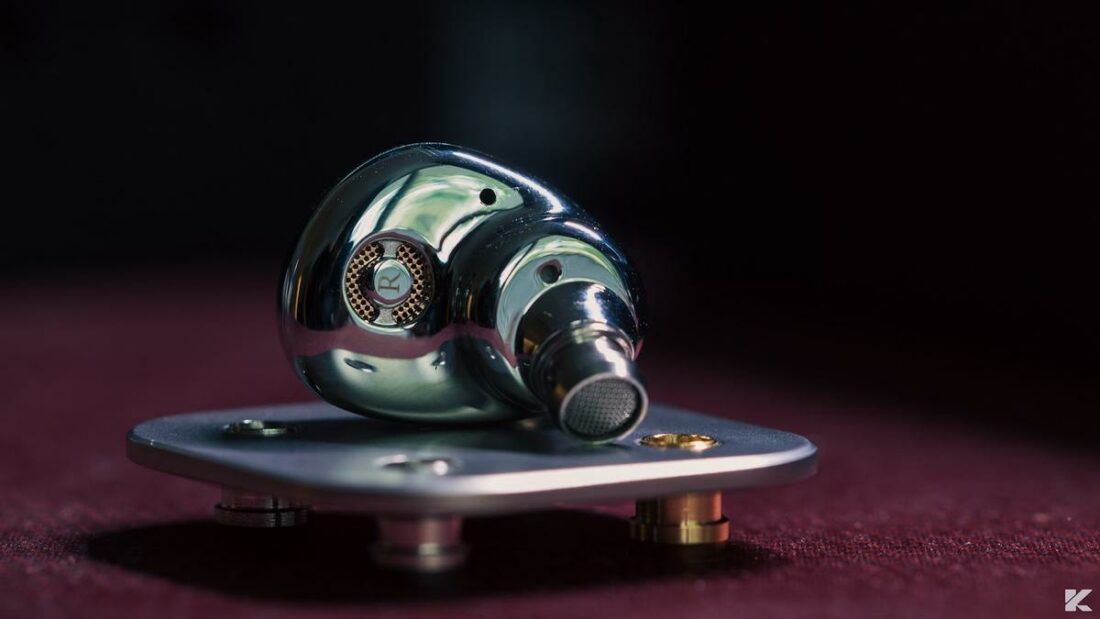
The mirror polish attracts fingerprints and smudges, so keep a microfiber cloth handy. Other than that – no qualms whatsoever.
Cable
The stock cable has excellent design and ergonomics. The aluminum foil shielding around the wire “core” further enhances the aesthetics, though the gap between the turns of the foil defeats the purpose of RF shielding.
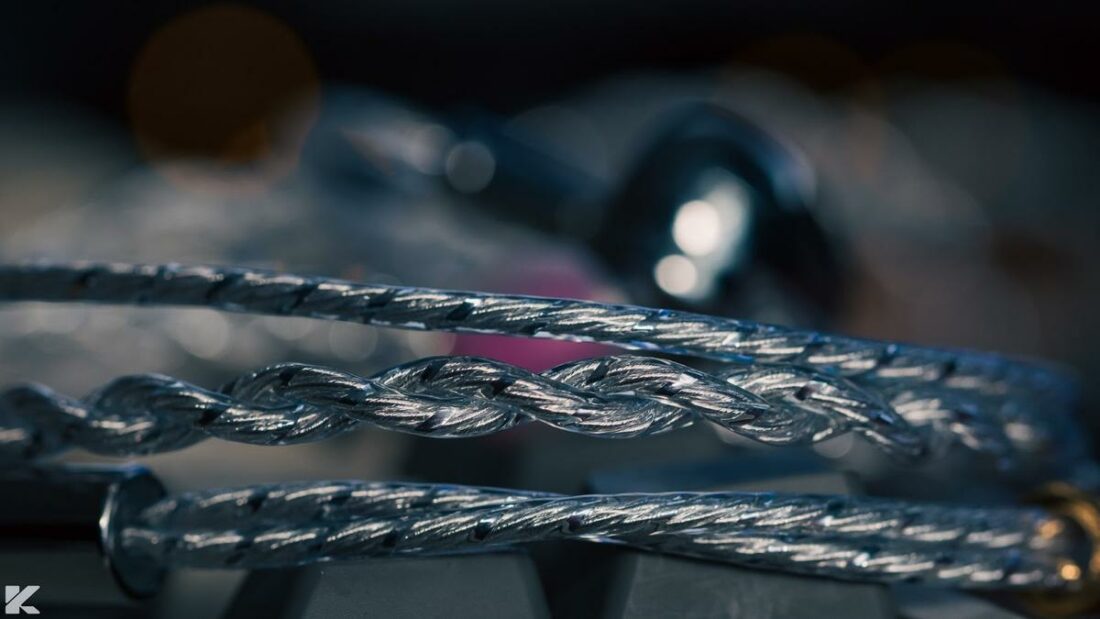
You are stuck with the stock cable’s single-ended output and must purchase a third-party cable for a balanced termination.
Comfort
The EA1000 have some significant weight (approximately 11 grams per shell), but the overall comfort and ergonomics are excellent. I can wear them for multiple hours without fatigue or the need to readjust the fit.
Under the Hood
There are multiple innovative and interesting aspects to the EA1000’s driver setup, and the most notable among them is the 6mm passive radiator.
Passive radiators in stereo speakers have been around for a long time, and budget Bluetooth speakers and car speakers use this old but efficient tech extensively.
In IEMs, however, such passive drivers are rarely seen. Softears use passive BA drivers inside some of their multi-driver IEMs to reduce pneumatic pressure, but that’s about it.
One puzzling aspect of Simgot’s passive radiator implementation is that the acoustic chamber is not completely sealed, which is the case for traditional speakers. Moreover, the moving mass of the active driver is not as substantial as the larger speaker drivers.
So, I have a sneaking suspicion that this setup might not be the most “efficient” in terms of performance, and the improvements you notice in the bass are likely subtle and not as drastic as with a full-sized speaker setup.
Taping up the passive radiator vent on the EA1000 reduces the bass texture, and there is a slight loss of physicality. These changes do not show up in the FR graph, so I believe that Simgot utilizes bone conduction with the passive driver.
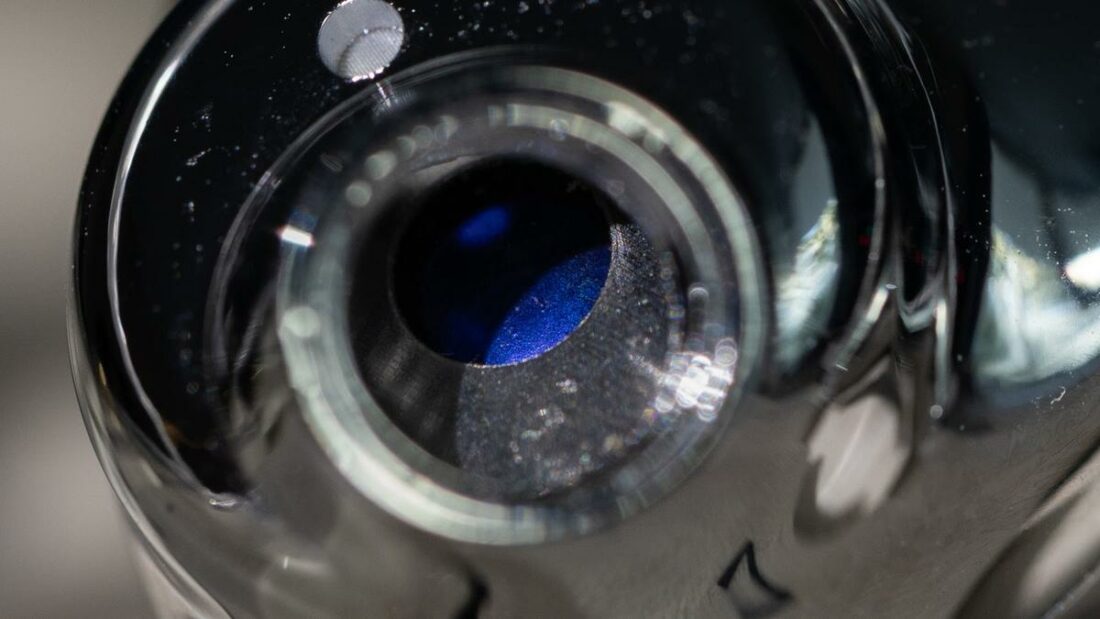
The main 10mm driver uses a SDPGD diaphragm and DMDC magnet assembly.
The sputter deposition purple-gold diaphragm (SDPGD) has a layer of gold deposition to increase the stiffness of the driver. This driver looks unlike anything I have seen so far, with a bright purple/blue hue that can be seen from the outside at certain angles.
Meanwhile, double-magnet double-chamber (DMDC) technology is a bit more popular nowadays. There are two magnet circuits: one internal and one external, while the driver chamber is also doubled to house these different kinds of magnets.
All in all, it is a fascinating driver setup with the inclusion of technology rarely seen in this price category.
How Do the Simgot EA1000 Sound?
The Simgot EA1000 have a slight V-shaped tuning, with some emphasis in the treble region.
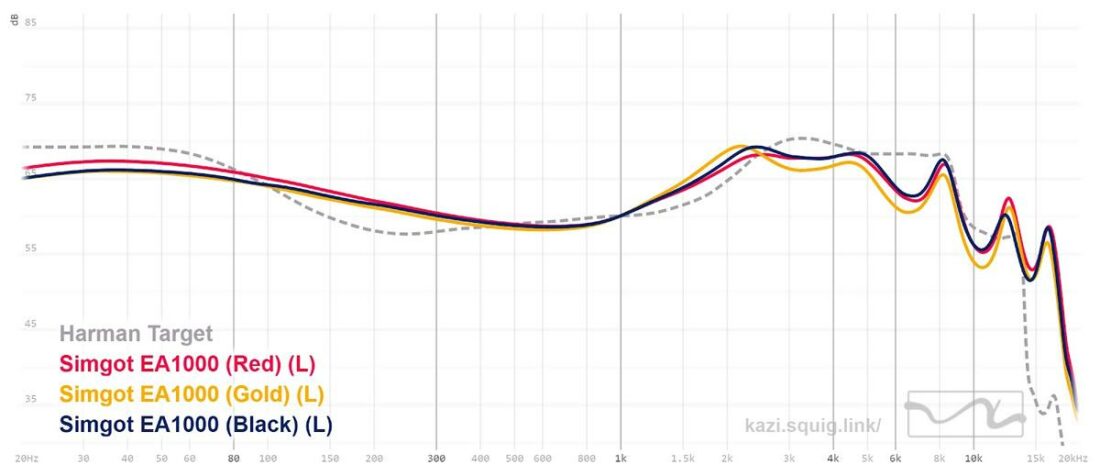
While the tuning filters can slightly alter the amount of bass and treble, the general sound signature largely remains similar.
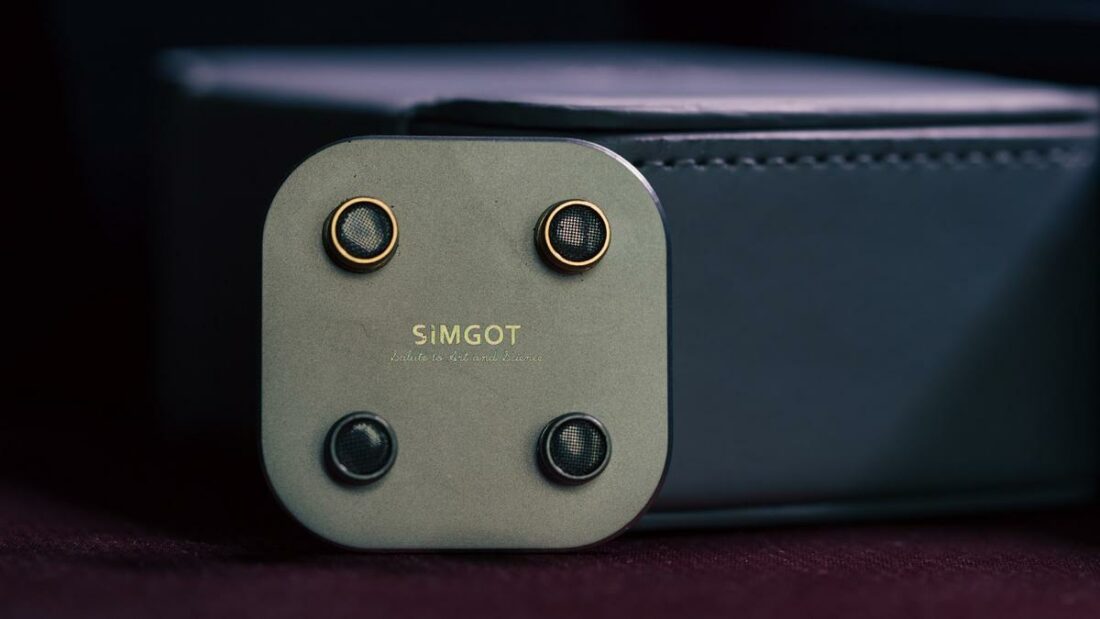
Bass
The low-end is the best aspect of the EA1000, with a sense of rhythm and physicality that is hard to find in the current market where most of the focus is put on an exaggerated sub-bass shelf.
Simgot bucks that trend and is not shy to offer some mid-bass presence. Snare hits and percussions sound bodied and realistic. The mid-bass texture is especially noticeable as the passive radiator adds tactility to bass notes.
The sub-bass is not too strong, and those looking for deep rumble might feel disappointed. It’s all about the nuances when it comes to the EA1000’s bass, and it’s an aspect I appreciate.
Midrange
The lower mids are somewhat on the thin side, as there is a bit of a “scoop” between the upper-bass and the upper-midrange rise. This makes baritone vocals lose some of their depth and weight.
On the other hand, strings and guitar riffs are brought to the forefront, while pianos have a livelier rendition, as heard on Kashiwa Daisuke’s A Rainy Morning. Female vocals have a more engaging sound focused on the upper registers.
Such upper-mid forwardness can easily get shouty or strident if overdone, but Simgot manages to toe the line without crossing over. Overall resolution is excellent as a result, with subtle details being easy to pick out.
Treble
The treble has a slight metallic sheen, but other than that, there are no qualms on my side. Treble extension is the most prominent with the treble filter (red washer), albeit tip selection also plays a role here. I found Final E-types to aid in treble extension without going overboard.
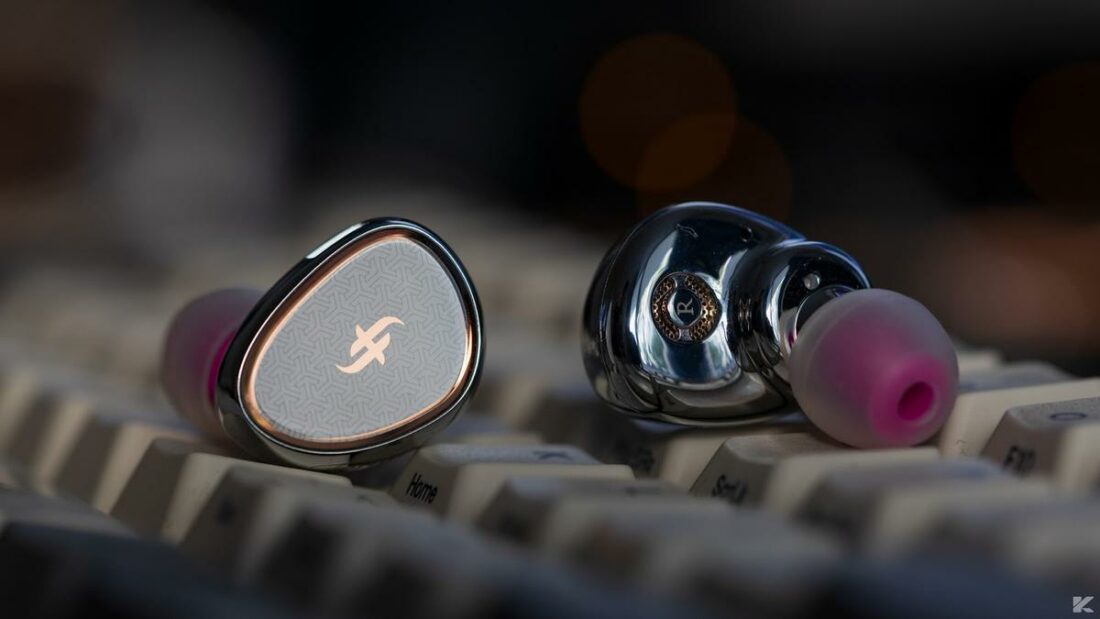
Soundstage and imaging
Staging has excellent width and height, while the depth perception is not as well rendered. Imaging is precise, with pans across stereo channels having no perceivable “gaps” in between.
Dynamics
The macrodynamic punch is not visceral due to the lack of sub-bass rumble, but it still manages to convey the “drama” in sudden bass drops and crescendos.
Microdynamics (subtle changes in volumes) are well reproduced, as can be heard on Counting Crows’ Miami. More expensive IEMs falter at this aspect, so kudos to Simgot for getting the microdynamics right.
Comparisons
Vs Sennheiser IE 200
The Sennheiser IE 200 are my go-to recommendation for a pair of midrange, single-dynamic driver IEMs. Let’s see how the EA1000 fare against such venerable competition.
First up: build quality. In terms of build, the IE 200 are a few steps below the EA1000, with the lightweight plastic build being nowhere near as beautiful to behold as the EA1000’s metal and glass ensemble.
Accessories are better on the EA1000 as well, though comfort and isolation go the IE 200’s way.
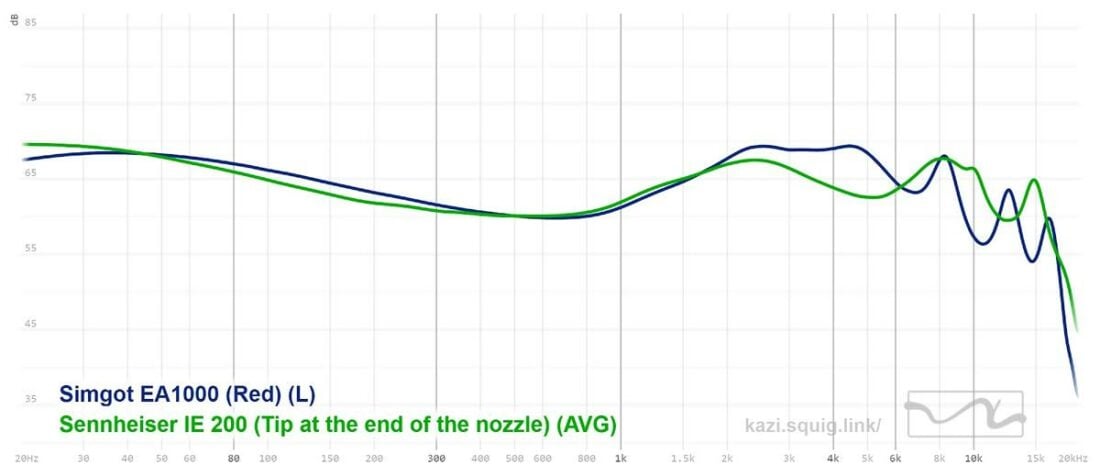
As for the sound, the IE 200 have better stage width, slightly better microdynamics, and their more laid-back midrange is better suited to my tastes. The mid-treble energy is more prominent, resulting in a more defined leading edge of cymbal hits and hi-hats, while the overall timbre is also better on the IE 200.
The EA1000 are noticeably more forward in the upper-midrange, have better stage height, better bass response and macrodynamic punch. The mid-treble is less pronounced, so it is easier to listen to than IE 200 for very treble-sensitive people, and the general airiness is better. Imaging is also more precise, and instrument separation is a notch above.
The EA1000 are at the same performance level as the IE 200, which is no mean feat.
I consider them complementary, though, as the IE 200 mostly fixes the shortcomings of the EA1000 and vice-versa. So it can’t hurt to have them both in the collection.
Where to Buy
Who Should Buy This?
Those who prefer a bright V-shaped tuning and want outstanding dynamics and spatial cues should have a blast with the EA1000.

Final Thoughts
While some of the previous Simgot releases earned my recommendation, I would hesitate to consider any of them best in class due to a certain lack of refinement in the tuning.
The EA1000 pass that hurdle and establish themselves as one of the best pairs of single-dynamic driver IEMs in their respective price bracket. They are not perfect; nothing is, but some of their imperfections can mitigated via tuning filters or ear tips.
Being the flagship of Simgot’s lineup, the price tag is unsurprisingly on the higher side and does not offer as much “value for money” as SImgot’s other releases. The EA1000 are all about performance, though, and the novel driver setup aids in achieving that target.
I recommend the EA1000 without reservations if you can handle the extra energy in the upper-mids and lower-treble. They are an engaging listen and showcase that Simgot is indeed capable of duking it out with the big boys.
What’s in the Box?
- Simgot EA1000 IEMs
- 6 pairs of silicone tips
- Multiple washers
- 2 pairs of tuning nozzles
- Carrying case
- 3.5mm cable
Technical Specifications
- Form: IEM
- Driver: 1 x SPGDP dynamic driver, 1 X passive radiator
- Impedance (Ohm): 16 ohms
- Sensitivity (dB): 127 dB/Vrms
- Weight (g): 22g
- Frequency Response (Hz): 10 Hz – 50 kHz
- Removable Cable: Y
- Source Jack: 3.5mm
- Cup/Shell Jack: 2-pin
- Mic: N
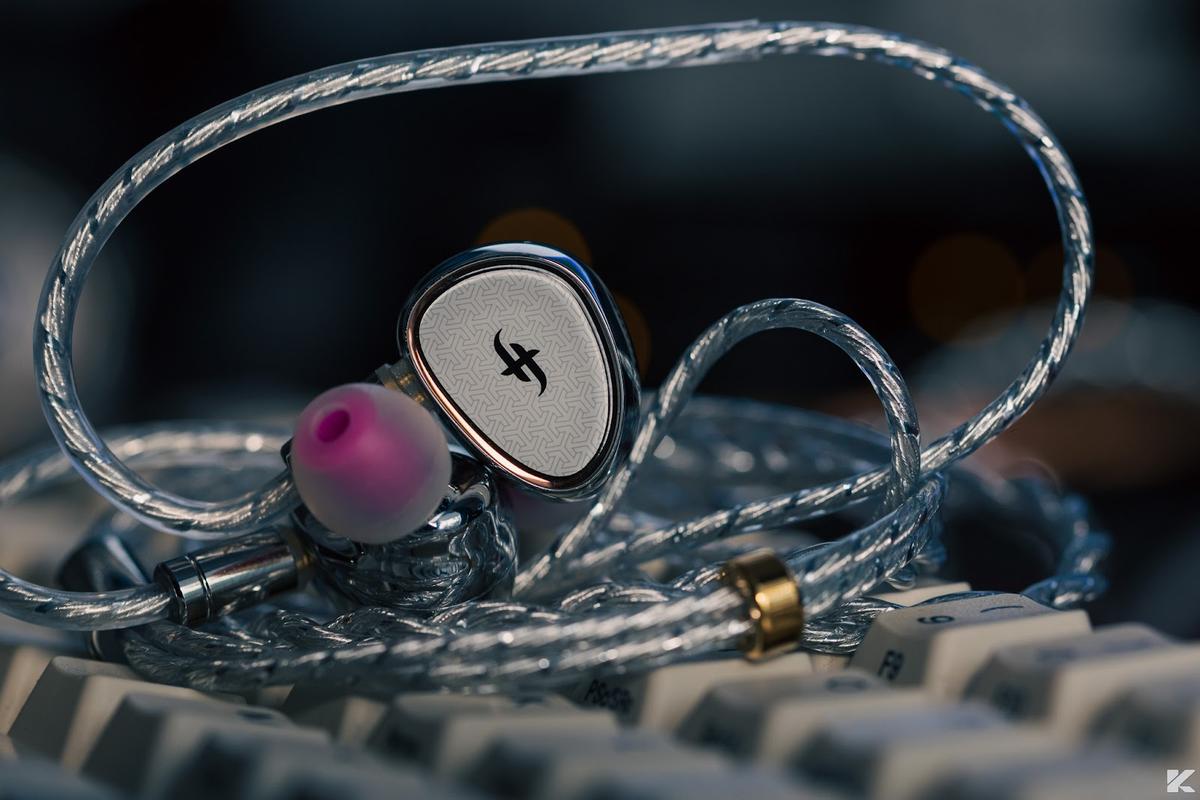
Thanks for the review. How do you think do these compare to the Orchestra Lite, if you have any experience with those?
Yes, I have already reviewed the Orchestra Lite as well. Those do not have as good bass and treble, but the mids are more “safely tuned” on the Orchestra Lite. I think in terms of overall resolution, EA1000 beat the Orchestra Lite. It’s just that the Orchestra Lite have less aggressive upper-mids.